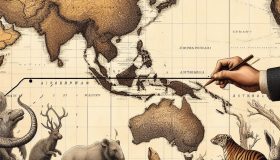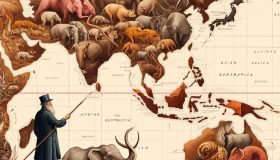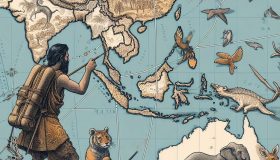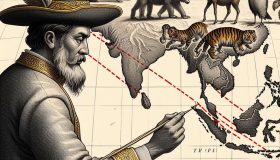
The Wallace Line is a geological and biological demarcation separating the flora and fauna of the Asia-Pacific region into two distinct zones. Named after the British naturalist Alfred Russel Wallace, who first proposed its existence, this line delineates a significant transition in biodiversity between the continents of Asia and Australia.
Geographical Context: Stretching from the Lombok Strait in Indonesia to the Makassar Strait in the north, the Wallace Line runs through the Indonesian archipelago, marking the boundary between the ecozones of Sundaland to the west and Wallacea to the east. This line signifies a stark difference in the distribution of animal and plant species on either side.
Biological Significance: The Wallace Line represents a unique biogeographical boundary, separating Asian species, such as tigers and rhinoceroses, from Australian species like kangaroos and marsupials. This transition is attributed to differences in geological history, ocean currents, and climate patterns between the two regions.
Impact on Evolutionary Theory: Alfred Russel Wallace’s observations of the distinct flora and fauna on either side of the Wallace Line played a crucial role in shaping his theory of evolution by natural selection. The geographical barrier posed by the line contributed to the divergence and speciation of species, providing evidence for the theory of evolution.
Conservation Concerns: The unique biodiversity found in the regions surrounding the Wallace Line makes it an area of significant conservation importance. However, factors such as deforestation, habitat destruction, and climate change pose serious threats to the delicate ecosystems of Sundaland and Wallacea.
The Wallace Line serves as a testament to the intricate interplay between geography, ecology, and evolutionary processes. Understanding its significance sheds light on the rich biodiversity of the Asia-Pacific region and emphasizes the importance of conservation efforts to protect these unique ecosystems for future generations.




